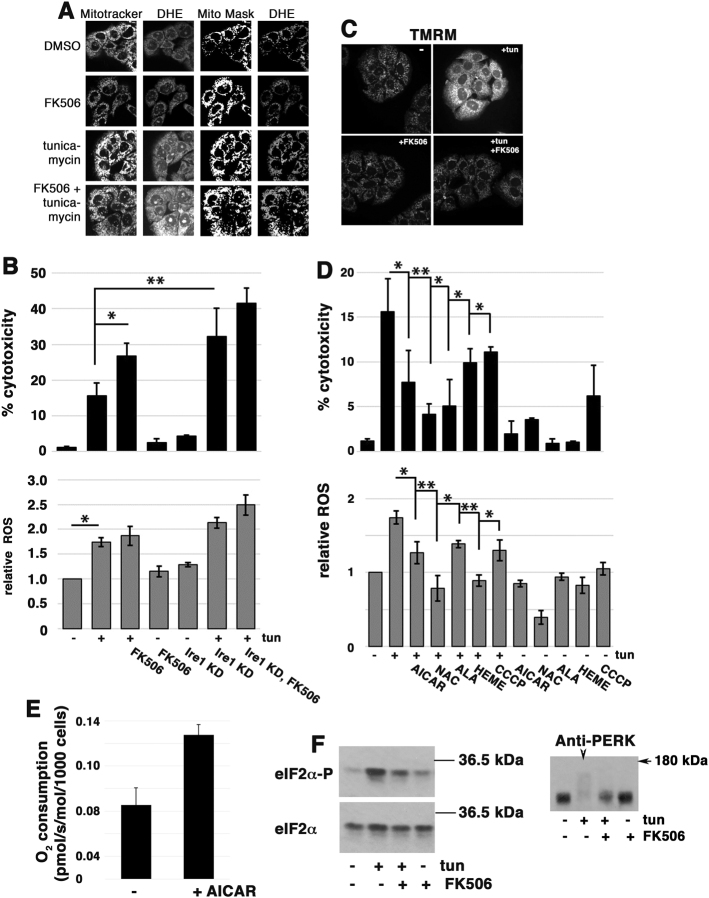Fig. 7.
ER stress induces ROS and death in PCCL3 cultured cells. a Calcineurin protects against ROS production. Cells were co-treated with FK506 (5 µM) and tunicamycin (100 ng/mL) for 2 days. Cells were then co-stained with DHE and Mitotracker green to detect ROS and mitochondria, respectively. b ER stress-induced cytotoxicity (top panel) and ROS accumulation (bottom panel) are exacerbated by calcineurin inhibition and Ire1 knockdown (kd). siRNAs were added to cells for 2 days before incubation with tunicamycin (100 ng/mL) for another 2 days before cytotoxicity was assayed. The cytotoxic effect of FK506 was determined after 2 days incubation with tunicamycin (100 ng/mL) with or without FK506 (5 µM). Cytotoxicity was assayed as leakage of LDH. n = 3 experiments; error bars are SEM. *p < 0.05. ROS accumulation was assayed by DHR123 fluorescence staining, as described in Methods. c Mitochondrial hyperpolarization is induced by tunicamycin (100 ng/mL). MMP, as measured by TMRM fluorescence, is increased by 1 h after tunicamycin treatment; this ER stress response is abrogated by FK506-mediated inhibition of calcineurin. d Tunicamycin-induced cytotoxicity (top panel) is dependent on mitochondrial ROS, and is suppressed by anti-oxidants (N-acetyl cysteine, 5 mM), heme (10 µM), increased heme synthesis (ALA, 300 µg/ml), increased O2 flux (induced by CCCP, 10 nM), and increased mitochondrial respiration (induced by AICAR, 0.5 mM). n = 3 experiments +/− SEM. *p < 0.05, **p < 0.01. Bottom panel, ROS accumulation was assayed by DHR123 fluorescence, as described in Methods. e AICAR increases O2 consumption. PCCL3 cells were treated with AICAR (0.5 mM) for 1 day, and then trypsinized, washed, and placed in a oxygraph for O2 consumption measurements, as described previously [62]. f Left panel, Calcineurin is necessary for tunicamycin-induced phosphorylation of eIF2α. Cells were treated with tunicamycin +/− FK506 (5 µM) for 2 days, as in a, and phosphorylated eIF2α and total eIF2α protein were assayed by Western blot. Right panel, Cell lysate from experiment shown in the left panel was blotted with anti-PERK antibody. Arrowhead, in tunicamycin-treated samples, phosphorylated PERK is seen as an extensive smear.

